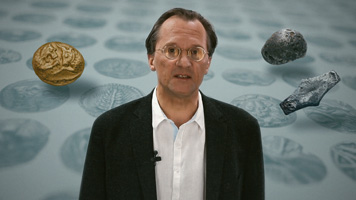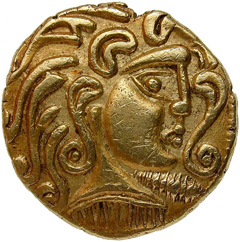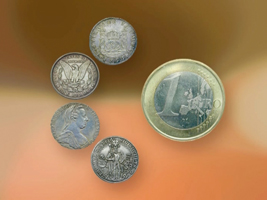Money and Material II – Coins and bank notes

All the many ways of paying now have a norm
Coins are originally pieces of precious metal of a given weight. Before being cast or minted into coins they are used in simple lump or bar form. And how and why these metal pieces are used initially doesn’t change when they are hammered into coins: they’re used to pay a debt, atone for a wrong, for the bride price, for tribute – for paying in the archaic sense. And coins are merely as one means of payment among many others that continue to be used for paying.
With coins, however, all the many ways of paying now have a norm: what had been a payment to render is now standardized into a kind of thing — so many cowry shell necklaces, armbands, etc. And so it first begins that such things are used as well as a medium of exchange. Besides payments they are now, on occasion, also an appropriate compensation for a swap, or as one can call it, a purchase. The necessity to buy is initially quite limited: Soldiers are given coins during long campaigns in order to buy provisions they could not carry with them but let others carry. Here the need to purchase arises because the supplies carried from home simply run out. Normally, however, provisioning does not involve the buying and selling of food or goods.

Replacing coins with paper money
The occasions expand where there is something to buy with coins but they basically remain limited: limited as to where and when something can be bought, limited to specific groups of people and above all limited to specific goods that can be sold or that are at all available to buy.
Replacing coins with paper money also remains limited for a long time. Whether in China or in Europe, these pieces of paper initially state their owner’s title to coins deposited somewhere. They are coin-substitutes and coin-stand-ins; they themselves are not a freely traded medium of exchange. In China if any difficulties arise with this paper, the notes can be exchanged in full for coins.

Securing supplies begins being based on money
It is fundamentally different only with a historic transformation: as securing supplies within a society actually begins being based on money, on the purchase and sale of goods. Only then do coins and banknotes come to be as we know them today: physical representatives of an exchangeable value that as such no longer physically exists and, chiefly, no longer circulates in this physical form.